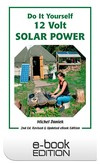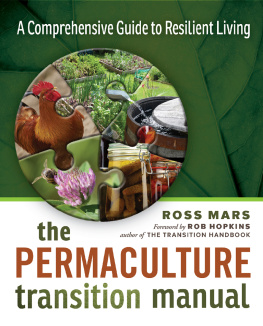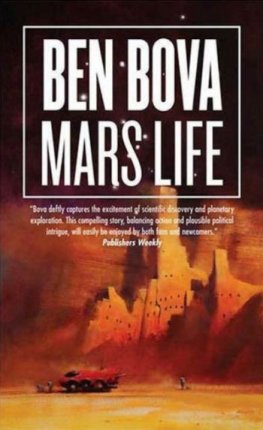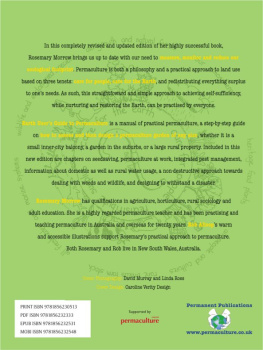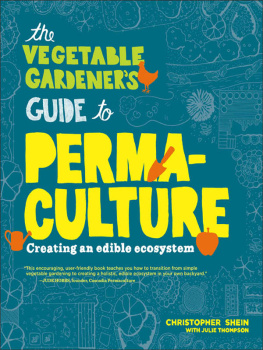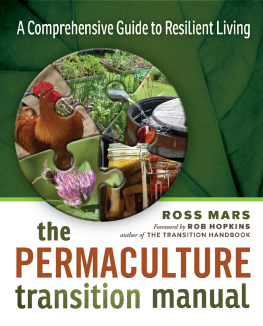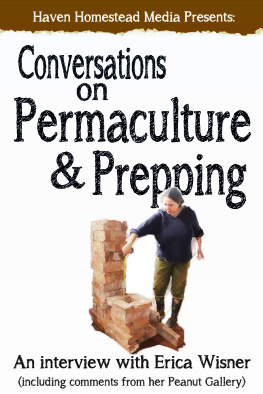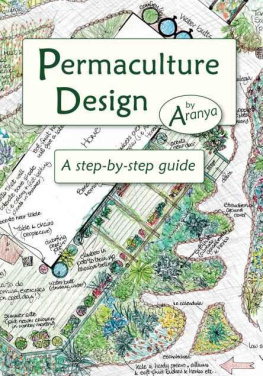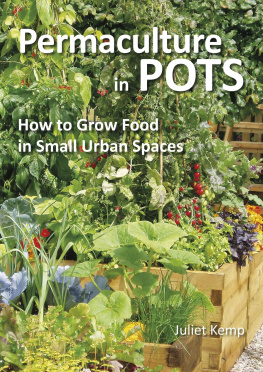Ross Mars - Getting Started in Permaculture
Here you can read online Ross Mars - Getting Started in Permaculture full text of the book (entire story) in english for free. Download pdf and epub, get meaning, cover and reviews about this ebook. year: 2012, publisher: Permanent Publications, genre: Children. Description of the work, (preface) as well as reviews are available. Best literature library LitArk.com created for fans of good reading and offers a wide selection of genres:
Romance novel
Science fiction
Adventure
Detective
Science
History
Home and family
Prose
Art
Politics
Computer
Non-fiction
Religion
Business
Children
Humor
Choose a favorite category and find really read worthwhile books. Enjoy immersion in the world of imagination, feel the emotions of the characters or learn something new for yourself, make an fascinating discovery.
- Book:Getting Started in Permaculture
- Author:
- Publisher:Permanent Publications
- Genre:
- Year:2012
- Rating:3 / 5
- Favourites:Add to favourites
- Your mark:
- 60
- 1
- 2
- 3
- 4
- 5
Getting Started in Permaculture: summary, description and annotation
We offer to read an annotation, description, summary or preface (depends on what the author of the book "Getting Started in Permaculture" wrote himself). If you haven't found the necessary information about the book — write in the comments, we will try to find it.
Ross Mars: author's other books
Who wrote Getting Started in Permaculture? Find out the surname, the name of the author of the book and a list of all author's works by series.
Getting Started in Permaculture — read online for free the complete book (whole text) full work
Below is the text of the book, divided by pages. System saving the place of the last page read, allows you to conveniently read the book "Getting Started in Permaculture" online for free, without having to search again every time where you left off. Put a bookmark, and you can go to the page where you finished reading at any time.
Font size:
Interval:
Bookmark:
Published by:
Permanent Publications
Hyden House Limited
The Sustainability Centre
East Meon, Hampshire GU32 1HR, UK
Tel: 01730 823 311
Fax: 01730 823 322
Overseas: (int. code +44 1730)
Email: info@permaculture.co.uk
Web: www.permaculture.co.uk
The rights of Ross and Jenny Mars to be identified as authors of this work has been asserted by them in accordance with the Copyright, Designs and Patents Act 1988.
2007 Ross & Jenny Mars
First printed 1994, revised 1998, Candlelight Trust
New edition 2007, Permanent Publications, reprinted 2008 and 2010
Designed and typeset by Tim Harland and John Adams
MOBIPOCKET ISBN: 978 1 85623 083 4
EPUB ISBN: 978 1 85623 084 1
All rights reserved. No part of this publication may be reproduced, stored in a retrieval system, rebound or transmitted in any form or by any means, electronic, mechanical, photo-copying, recording or otherwise, without the prior permission of Hyden House Limited.
Disclaimer
Everything in this book has been carfully tested by the authors, but neither the authors or the publisher shall have liability for any damage or loss (including, without limitation, financial loss, loss of profits, loss of business or any indirect or consequential loss), however it arises, resulting from the use of, or inability to use, the information in this book.
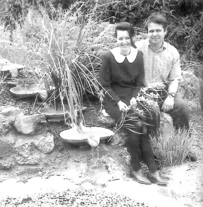
Jennifer Mars (Dip. Perm. Des.) is well known in Western Australia as a permaculture teacher. She is a primary school teacher who has contributed to the promotion of permaculture and sustainable living in both country and urban areas. Jenny has helped develop many permaculture designed gardens in schools, nurseries and back yards.
Ross Mars (Dip. Perm. Des.) is an experienced permaculture teacher, designer and consultant. He is a qualified high school teacher and has been actively involved in permaculture education in schools by examining ways of teaching permaculture concepts within the existing curriculum and developing strategies for new lessons in environmental education. Ross is the author of the well known text The Basics of Permaculture Design and has also produced an educational video Passive Solar Design of Buildings on energy efficient housing.
A sincere thank you goes to the following people who have made valuable contributions to this work:
Projects: Pat Scott, Miles Durand, Heather Lamont
Proofreading: Julie Woodman, Pat Scott, Marlyn Wade, Margaret Sampey, David Bayliss, Reny Mia Slay, Patrick Harland
Special thanks to:
Dora Byrne, Permaculture and Environment Centre, Midvale
Kevin Smith, Chittering Valley Worm Farm
Bill Mollison, Permaculture Institute, Tyalgum
Artwork: Patricia Dundas
Cartoons: Kate Dundas
Photographs: Ross and Jenny Mars
by Bill Mollison
Since its inception more than 30 years ago, permaculture has focused on positive solutions to the many problems facing the Earth. It encourages people to take responsibility for their own needs and those of their families by growing their own food, reducing their dependence on non-renewable resources and recycling wherever possible. In acquiring practical skills such as gardening, we need some knowledge of the basic techniques. This book, Getting Started in Permaculture, demonstrates some methods of organic growing, the use of natural pest control and discusses the responsible use of limited resources which can be recycled and re-used.
Ross and Jenny Mars are well known in Western Australia as teachers and designers of permaculture systems. Here they share their experience and knowledge with a series of activities and projects, each linked to a basic principle of permaculture. So, get your hands dirty go out and grow your own food and create your own abundance.
Good gardening,
Bill Mollison
Getting Started in Permaculture is a book of practical activities which show you how to design and build productive gardens. It outlines the step by step procedures for making herb fertilisers, compost, organic sprays for pest control and much more. The book also discusses how to recycle your soft drink bottles, waste paper and tyres in a number of useful projects such as ponds, fruit fly traps, retaining walls and even a solar still. It is based on the development of Candlelight Farm and the illustrate how it has evolved from a bare paddock into a harmonious, productive living system. Each chapter includes a 'Permaculture Perspective' section which explains some of the principles of permaculture design and reasons for advocated actions.
This book was originally written for use in the Southern hemisphere and as a result all references to solar orientation were the exact opposite of what we in the North would experience. In this edition all references to North and South have been transposed for Northern hemisphere readers. If you are reading this in the Southern hemisphere please read North for South. All measurements in this book are given in metric.
To convert Fahrenheit to Celsius: deduct 32, divide this number by 9 and then multiply by 5.
Measurement Conversion
- 1 inch = 2.54 centimetres (cm) = 25.4 millimetres (mm)
- 1 foot = 305 millimetres (mm)
- 1 yard = 0.914 metre (m)
- 1 cubic yard = 0.765 cubic metre (m3)
- 1 pound = 454 grams (g)
- 1 acre = 0.405 hectare (ha)
- 1 gallon = 4.55 litres (l)
The term permaculture is a combination of the words permanent and agriculture, or permanent and culture. The difference between permaculture and normal agricultural methods is the diversity of organisms in the permaculture system.
Many plants and animals are incorporated in the design; each complementing others, and each having several functions to perform. For example, a pond can be used as an aquaculture centre, a source of water for human consumption or gardens, emergency water for fire control, and for cooling hot winds as part of a climate control method.
Similarly, chickens in a permaculture design might be used for control of pests in the vegetable patch, fruit fly control in an orchard, a source of manure for the garden or methane generator, and for meat or eggs.
Permaculture is an integrated design process where structures, plants and animals are placed in specific areas. It can be applied to both urban and rural properties, from inner city flats to broad acres. Most urban backyards are small and the main activity would be to grow a range of quality, healthy food.
Designs for rural properties are different. Larger-scale permaculture development would include the use of fodder trees for stock, water harvesting methods and water storage, windbreak and shelter areas for animals, agroforestry and alley cropping techniques, land care planting, and commercial food production, such as organic vegetables, nut and fruit trees.
For many people, permaculture is a philosophy and way of life. It is about taking responsibility for your own life and doing the things you feel are important for your own well being, for the well being of others and the well being of our planet.
There are three main ethics which are universally accepted by permaculture practitioners.
These are:
Font size:
Interval:
Bookmark:
Similar books «Getting Started in Permaculture»
Look at similar books to Getting Started in Permaculture. We have selected literature similar in name and meaning in the hope of providing readers with more options to find new, interesting, not yet read works.
Discussion, reviews of the book Getting Started in Permaculture and just readers' own opinions. Leave your comments, write what you think about the work, its meaning or the main characters. Specify what exactly you liked and what you didn't like, and why you think so.

